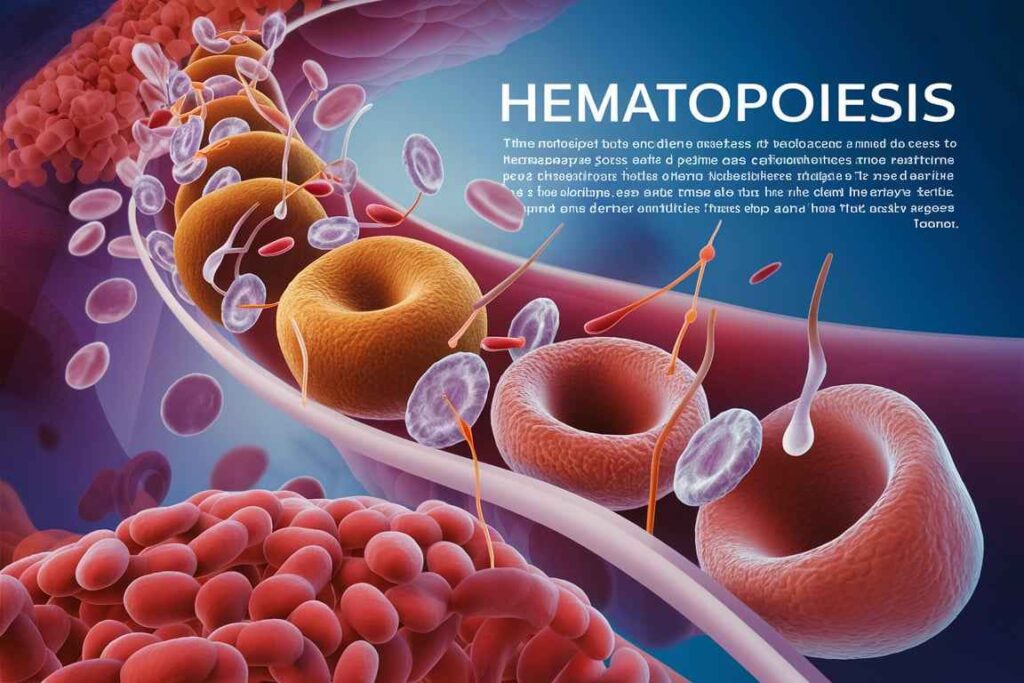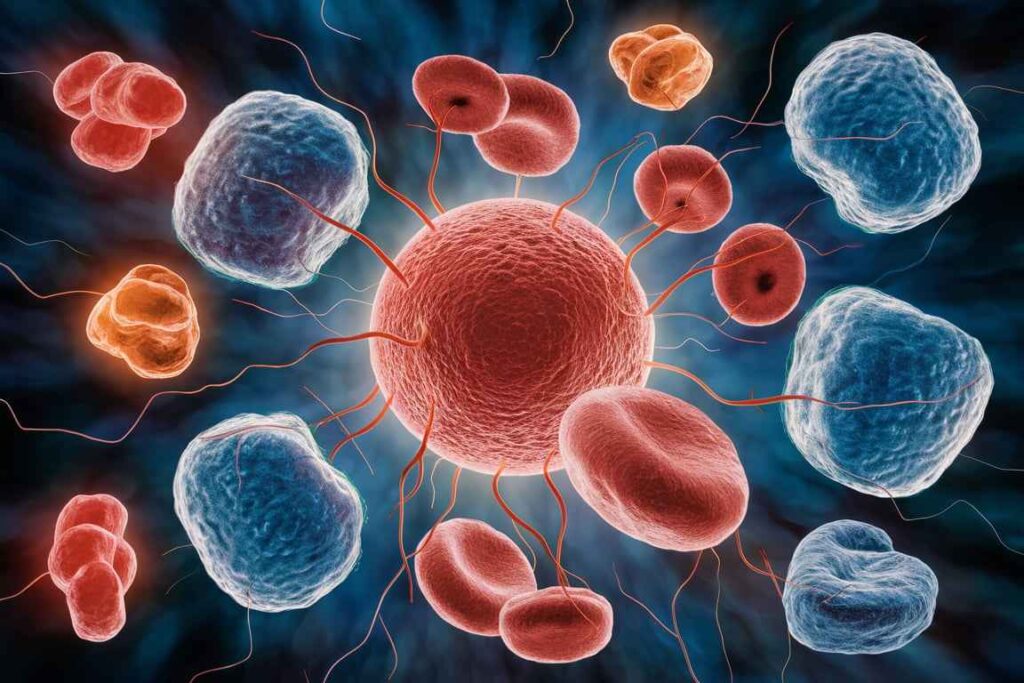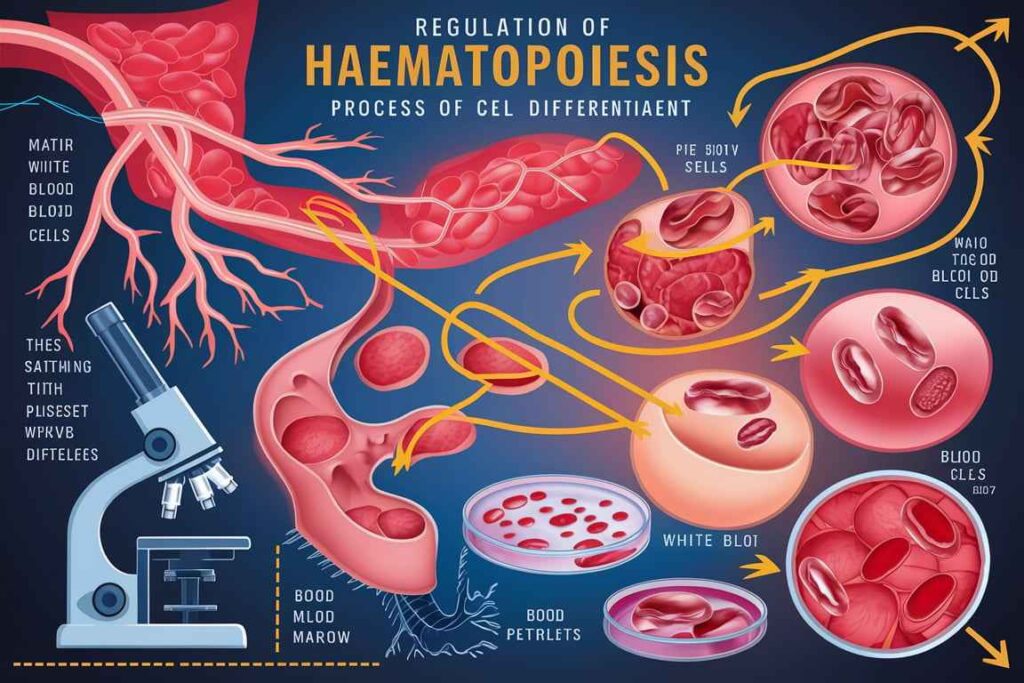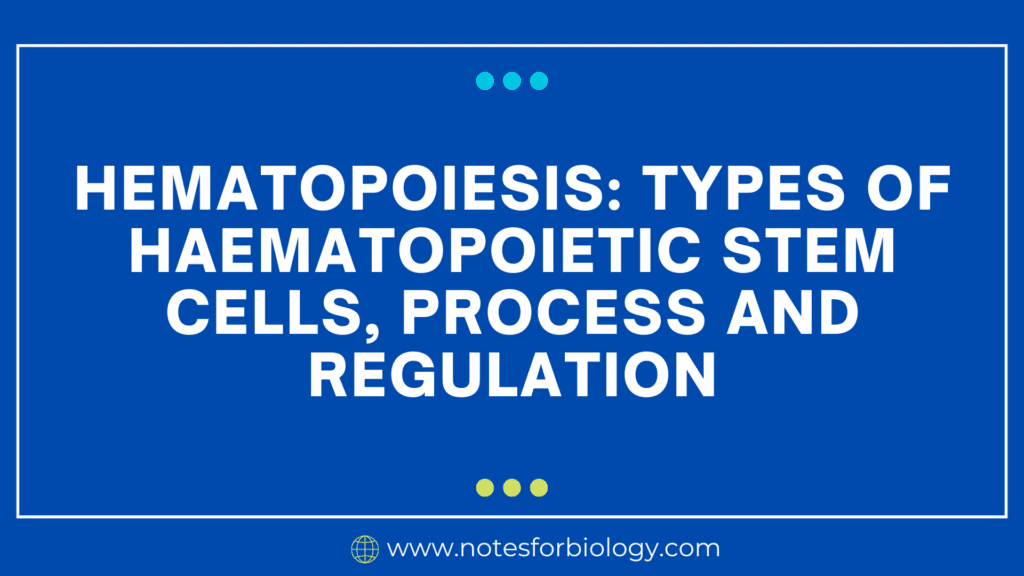Hematopoiesis is the process by which all blood cells are produced from hematopoietic stem cells (HSCs) in the bone marrow. This process is vital for maintaining the proper function and balance of the blood and immune systems.
Table of Contents
Hematopoiesis
The process by which all blood cells are created from hematopoietic stem cells (HSCs) in the bone marrow is known as hematopoiesis. The differentiation and development of stem cells into distinct blood cell types, such as red blood cells, white blood cells, and platelets, is a complicated process. In order to keep the immune and blood systems in balance and sustain the regular replenishment of blood cells throughout an individual’s life, it is necessary. It is controlled by a mix of extrinsic factors, including growth factors, cytokines, and interactions within the bone marrow microenvironment, and intrinsic factors, such transcription factors and epigenetic alterations.

Types of Hematopoietic Stem Cells
1. Hematopoietic Stem Cells for Long Term (LT-HSCs):
These cells are capable of self-renewing and maintaining hematopoiesis for the duration of a person’s life.
They can become active in response to hematopoietic stress or injury, although they are quiescent (dormant) for extended periods of time.
2. Hematopoietic stem cells for short-term use (ST-HSCs):
These cells mostly support short-term hematopoiesis and have a limited capacity for self-renewal.
They divide into progenitor cells, which give rise to distinct lineages of blood cells.
3. MPPs, or multipotent progenitor cells:
Although these cells can no longer self-renew, they still have the capacity to develop into distinct types of blood cells.
More lineage-restricted progenitor cells are produced by MPPs.
Process
Stem Cell Maintenance:
LT-HSCs are found in specialized microenvironments known as niches in the bone marrow.
These niches send signals that help to maintain the stem cell pool and regulate its activation and quiescence.
Commitment and differentiation
When required, LT-HSCs become activated and differentiate into ST-HSCs and MPPs.
MPPs further diversify into two major progenitor lineages.
Common myeloid progenitors (CMPs)

They are Myeloid cells are formed, including erythrocytes (red blood cells), megakaryocytes (platelet-producing cells), granulocytes (neutrophils, eosinophils, basophils), and monocytes.
Common Lymphoid Progenitor (CLP): Create lymphoid cells such as T cells, B cells, and natural killer (NK) cells.
Maturity and Release:
In the bone marrow, progenitor cells go through multiple differentiating and maturing stages.
Mature blood cells are discharged into the peripheral bloodstream to carry out their respective activities.
Regulation of Haematopoiesis

Intrinsic factors:
Transcription factors include proteins such as GATA-1, PU.1, and RUNX1, which regulate gene expression essential for blood cell development and maturation.
Epigenetic Modifications: DNA methylation and histone modification changes affect gene expression and stem cell fate.
External Factors:
Cytokines and Growth Factors: Signaling molecules including EPO, G-CSF, and ILs control the proliferation and differentiation of certain blood cell lineages.
Cell-Cell Interactions: The interactions between HSCs and stromal cells in the bone marrow microenvironment offer critical signals for stem cell survival and differentiation.
Microenvironmental Factors:
Bone Marrow Niche: The microenvironment, which includes extracellular matrix components, oxygen levels, and nutrition availability, is crucial for controlling HSC function and hematopoiesis.
Hypoxia: Low oxygen levels in the bone marrow niche induce HSC quiescence and self-renewal via hypoxia-inducible factors (HIFs).
Feedback mechanisms:
Negative Feedback: The creation of mature blood cells can hinder hematopoiesis. For example, high quantities of erythrocytes can reduce EPO production.
Positive Feedback: Increased demand for certain blood cells in response to infection or blood loss can promote cytokine and growth factor synthesis, hence enhancing hematopoiesis.
Frequently Asked Question
What is Hematopoiesis ?
The process by which all blood cells are created from hematopoietic stem cells (HSCs) in the bone marrow is known as hematopoiesis. The differentiation and development of stem cells into distinct blood cell types, such as red blood cells, white blood cells, and platelets, is a complicated process.
What are the Process of Hematopoiesis ?
The Process of Hematopoiesis are
1. Stem Cell Maintenance
2. Commitment and differentiation
3. Common myeloid progenitors (CMPs)
4. Maturity and Release
What are the stage of Hematopoiesis ?
The stage of Hematopoiesis are
1. Hematopoietic Stem Cells (HSCs)
2. Progenitor Cells
3. Precursor Cells
4. Mature Blood Cells
Related Article
Amphotericin B: mechanism, spectrum, pharmacokinetics, uses and side effects

